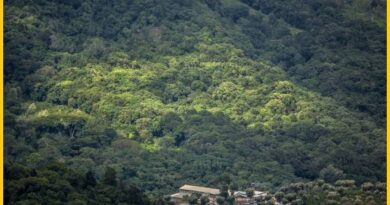Icon of Odisha: The Magnificent Konark Sun Temple
Konark sun temple
The Konark Sun Temple is a UNESCO World Heritage Site located in the town of Konark in the Indian state of Odisha (formerly known as Orissa). It is one of the most famous and stunning temples in India, renowned for its intricate architectural details and historical significance. The temple was built in the 13th century by King Narasimhadeva I of the Eastern Ganga Dynasty. It is designed in the form of a colossal chariot with 24 wheels, pulled by seven horses, and driven by the sun god Surya. The temple is adorned with elaborate stone carvings depicting various scenes from Hindu mythology, including deities, celestial beings, animals, and floral motifs.
The Konark Sun Temple is dedicated to the Hindu sun god Surya. Its architectural design symbolizes the passage of time, with the chariot wheels representing the 24 hours in a day and the seven horses representing the days of the week. The temple is also believed to serve as a giant sundial, with shadows cast by the sun’s rays indicating the time of day. The Konark Sun Temple is considered a masterpiece of Odishan architecture and a symbol of Odisha’s rich cultural heritage. It is one of the “Char Dham” pilgrimage sites for Hindus, along with Puri, Rameswaram, and Dwarka. The temple attracts thousands of visitors and pilgrims from around the world who come to admire its beauty and seek blessings.
Conservation: Over the centuries, the Konark Sun Temple has suffered damage from natural disasters, environmental factors, and human activity. Efforts have been made by the Indian government and conservation organizations to preserve and protect the temple complex. Restoration work has been undertaken to stabilize the structure and prevent further deterioration. Tourism: The Konark Sun Temple is a popular tourist destination and receives a large number of visitors throughout the year. Tourists can explore the temple complex, marvel at its architectural grandeur, and learn about its history and significance through guided tours and informative displays.
The best time to visit Konark Sun Temple
The best time to visit the Konark Sun Temple is during the cooler and drier months, which typically fall between October and March. During the winter months (October to March), the weather in Odisha is relatively cooler and more comfortable, with temperatures ranging from around 15°C to 30°C. This makes it pleasant to explore the temple complex and enjoy outdoor activities without the discomfort of extreme heat or humidity.
Also Read- Magnificence of Jagannath Puri, Where Legends Come Alive
The winter months coincide with several festivals and cultural events in Odisha, including the Konark Dance Festival, which is held annually in December. This festival showcases classical and traditional dance performances against the backdrop of the Konark Sun Temple, adding to the cultural experience of visiting the site.
Konark Sun Temple History
Puri to Konark Sun Temple Distance
The distance from Puri to the Konark Sun Temple is approximately 35 kilometers when traveling by road. The journey typically takes around 1 to 1.5 hours by car, depending on traffic conditions and the route taken.
Taxi or Car Rental: Hiring a taxi or renting a car is one of the most convenient ways to travel from Puri to Konark. The road journey offers scenic views of the coastal landscape and countryside. Bus: Public buses operated by the Odisha State Road Transport Corporation (OSRTC) also connect Puri to Konark. The bus journey takes approximately 1.5 to 2 hours, depending on the type of bus and the number of stops along the route. Auto-Rickshaw: Auto-rickshaws are another option for traveling from Puri to Konark. While they may be slower than taxis or buses, they offer a more budget-friendly mode of transportation.




